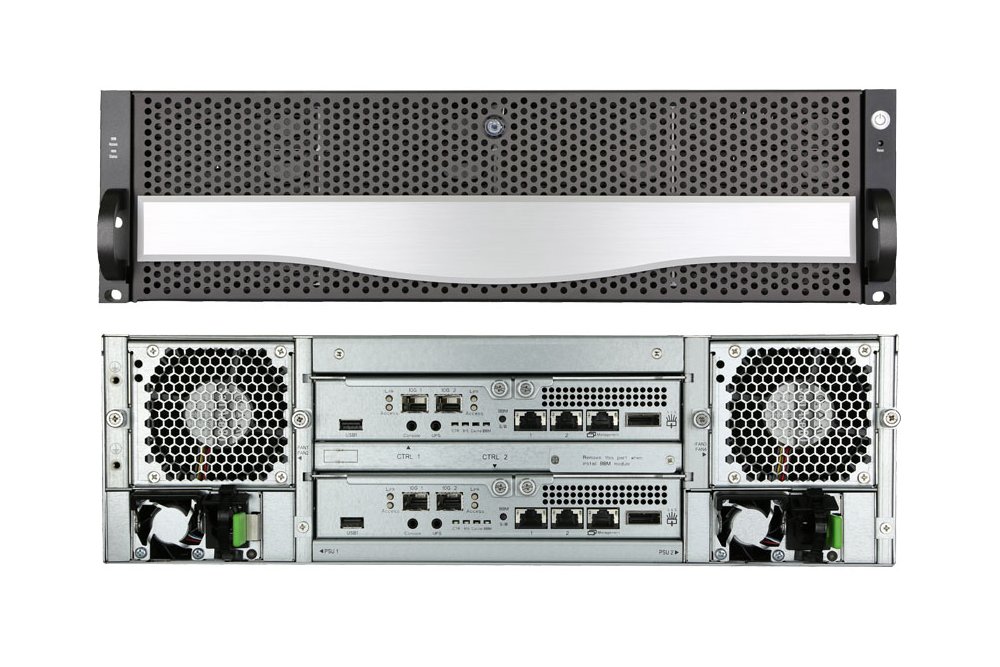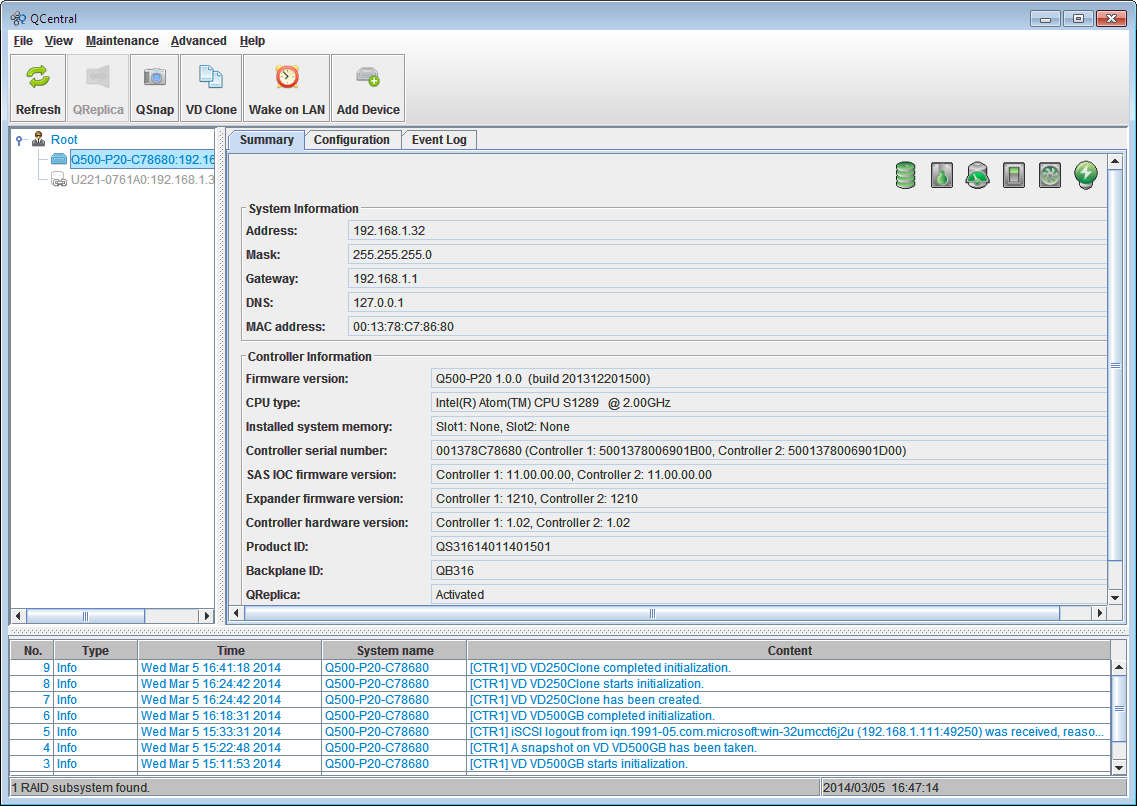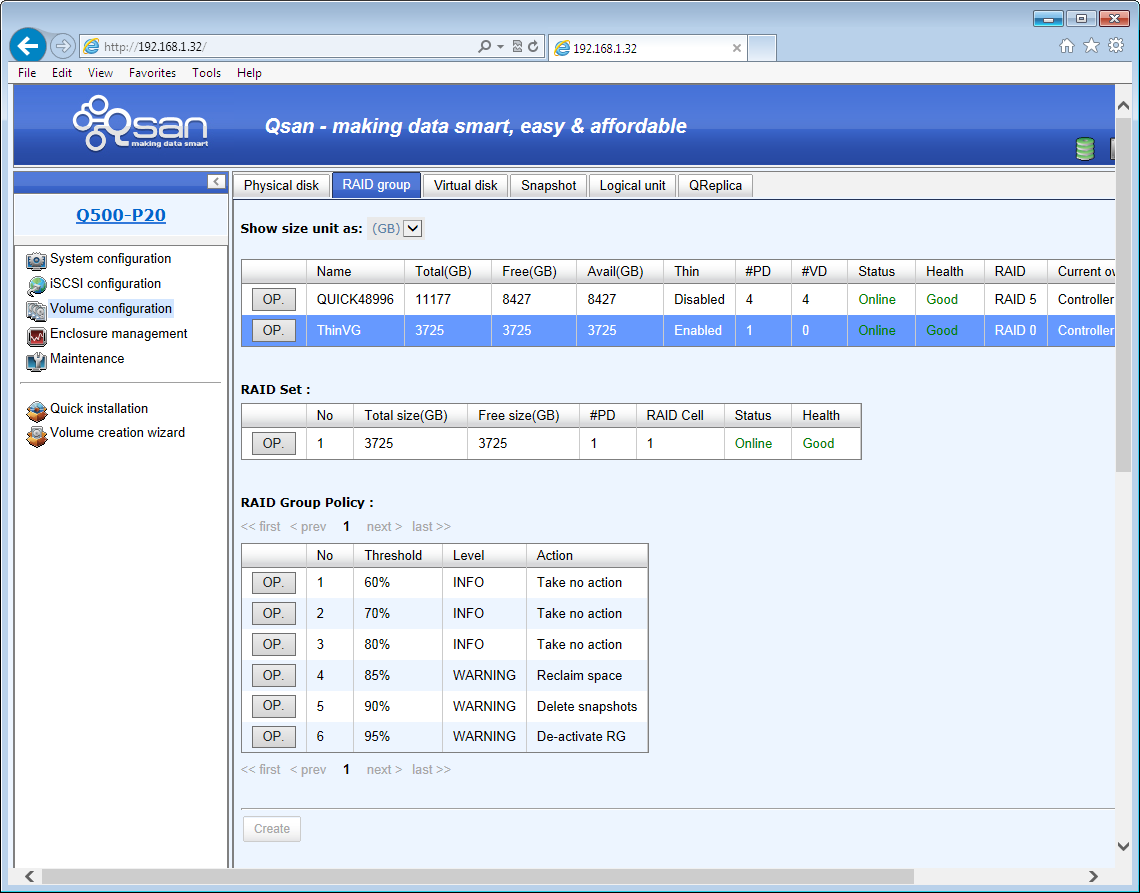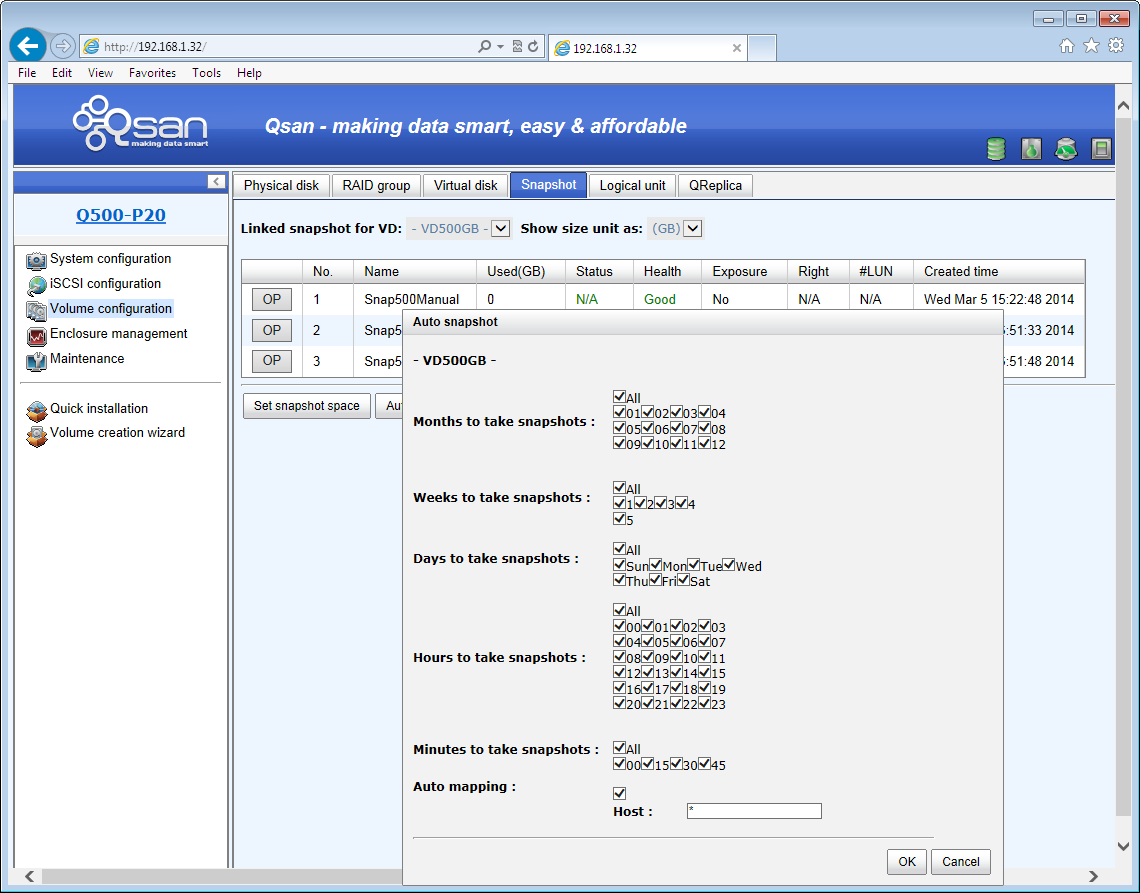Qsan AegisSAN Q500-P20-D316 review
Qsan’s AegisSAN Q500-P20 appliance delivers an affordable 10-Gigabit IP SAN solution to SMBs.


The Q500-P20-D316 delivers a lot of hardware at a low price making it a fine choice for SMBs looking for a 10GbE IP SAN. Performance is respectable, it has end-to-end redundancy and capacity expansion potential is huge.
-
+
Excellent value;Dual active controllers; 10-Gigabit ready; Good performance
-
-
SATA drives need MUX boards

Qsan claims its Q500-P20 is the world's first IP SAN appliance to use Intel's Atom SoC specifically designed for SANs. There's more as it supports dual RAID controllers, adds 10-Gigabit (10GbE) to the mix and brings it all in at a price that'll make SMBs sit up and take notice.
Supplied by CMS Distribution, the Q500-P20-D316 includes both controllers each with dual 10GbE SFP+ and copper Gigabit data ports. The controllers operate in active/active mode and the appliance includes dual hot-plug 550W power supplies and fan modules.
They use 2GHz S1289 Briarwood' Atom CPUs. Along with dual cores and a low 14.1W TDP, they support up to 8GB of DDR3 memory. The controllers start with 4GB of battery protected cache memory which can be upgraded to the maximum 8GB.
The controllers each have an external SAS port and the Q500-P20 supports up to 256 hard disks. You can daisy-chain Qsan's J300Q JBOD disk shelves which also have dual redundant PSUs and fans.

The QCentral app can be used to manage multiple Qsan appliances from one interface
Installation and MUX
For testing we loaded up a quartet of Western Digital 4TB Enterprise SAS 2 hard disks. If you want to use SATA drives you'll need Qsan's MUX interposer boards which fit at the rear of each drive carrier. Costing 40-50 each, these negate the cost benefits of using cheaper SATA drives.
The controllers each have a Gigabit management port for further redundancy. You can manage the appliance using either a web browser or Qsan's QCentral utility which is designed to manage multiple appliances from a single interface.
Your first job is to create RAID Groups (RGs) which can comprise any or all available hard disks. Both interfaces provide wizards that will grab all the drives and offer to create the most appropriate array from them.
Array options include stripes, mirrors, RAID-5 and -6 plus Qsan's N-way mirroring where the array can contain multiple mirrors for N-1 failover. Thin provisioning is supported via Qsan's QThin feature which is applied only to RGs.

Policies can be applied to thin provisioned RGs to warn you when space is getting low
VDs and access security
Policies can be set for thinly provisioned volumes to alert you when space is getting tight. You can set up to six capacity thresholds and actions including sending an email, reclaiming space, deleting snapshots or taking the RG offline.
For iSCSI targets, you create virtual disks (VDs) within an RG where you decide on a size and set other parameters such as the block size. If you're running low on space you can add more physical disks to the RG and expand VDs into them.
Each VD is assigned a LUN and during attachment you can decide which host initiators are allowed to access it. For global access you just use a wild card and you can also set the LUN to read only or read/write.

VD snapshots are easy to create and can be scheduled to run as often as every 15 minutes
Get the ITPro daily newsletter
Sign up today and you will receive a free copy of our Future Focus 2025 report - the leading guidance on AI, cybersecurity and other IT challenges as per 700+ senior executives
Dave is an IT consultant and freelance journalist specialising in hands-on reviews of computer networking products covering all market sectors from small businesses to enterprises. Founder of Binary Testing Ltd – the UK’s premier independent network testing laboratory - Dave has over 45 years of experience in the IT industry.
Dave has produced many thousands of in-depth business networking product reviews from his lab which have been reproduced globally. Writing for ITPro and its sister title, PC Pro, he covers all areas of business IT infrastructure, including servers, storage, network security, data protection, cloud, infrastructure and services.
-
 CyberOne appoints Microsoft’s Tracey Pretorius to its advisory board
CyberOne appoints Microsoft’s Tracey Pretorius to its advisory boardNews The threat intelligence leader will provide strategic guidance to CyberOne’s executive team
By Daniel Todd Published
-
 CISA issues warning in wake of Oracle cloud credentials leak
CISA issues warning in wake of Oracle cloud credentials leakNews The security agency has published guidance for enterprises at risk
By Ross Kelly Published
-
 Reports: White House mulling DeepSeek ban amid investigation
Reports: White House mulling DeepSeek ban amid investigationNews Nvidia is caught up in US-China AI battle, but Huang still visits DeepSeek in Beijing
By Nicole Kobie Published